OBD-II Protocol -- SAE J1850 VPW PWM
http://www.auto-diagnostics.info/j1850
j1850
The SAE J1850 bus bus is used for diagnostics and data sharing applications in vehicles. The J1850 bus takes two forms:
- 41.6Kbps Pulse Width Modulated (PWM) two wire differential approach (Ford vehicles)
- 10.4Kbps Variable Pulse Width (VPW) single wire approach (GM vehicles)
The single wire approach may have a bus length up to 35 meters (with 32 nodes). Developed in 1994, J1850 may be phased out for new designs. The J1850 Interface is a class B protocol.
A high resides between 4.25 volts and 20 volts, a low is any thing below 3.5 volts. High and low values are sent as bit symbols (not single bits). Symbols times are 64uS and 128uS for the single wire approach. The bus uses a weak pull-down, the driver needs to pull the bus high, high signals are considered dominant. A passive logic 1 is sent as a 128uS low level, an active logic 1 is sent as a 64uS high. A passive logic 0 is sent as a 64uS low level, an active logic 0 is sent as a 128uS high. The J1850 protocol uses CSMA/CR arbitration.
J1850 Frame structure
The frame consists of a Start Of Frame [SOF], which is high for 200uS.
The Header byte follows the SOF and is one byte long.
The data follows the header byte.
The one byte CRC [Cyclical Redundancy Check] follows the data field.
After the CRC an End Of Data [EOD] symbol is sent.
The EOD is sent as a 200uS low pulse.

J1850 Transmission Signal Format
In many cases the J1850 interface bits will be found on an OBDII connector inside a passenger car.
OBDII [On-Board Diagnostics II] defines a communications protocol and a standard connector to acquire data from passenger cars.
However because of the age of the J1850 bus standard, it may not reside on newer late model vehicles which use CAN-BUS.

Real J1850 PWM signal as measured in our lab
http://www.emotive.de/en/de/doc/car-diagnostic-systems/bus-systems/sae-j1850



http://www.shieldedpair.net/BAE5030/Lectures/J1850%20Introduction.pdf

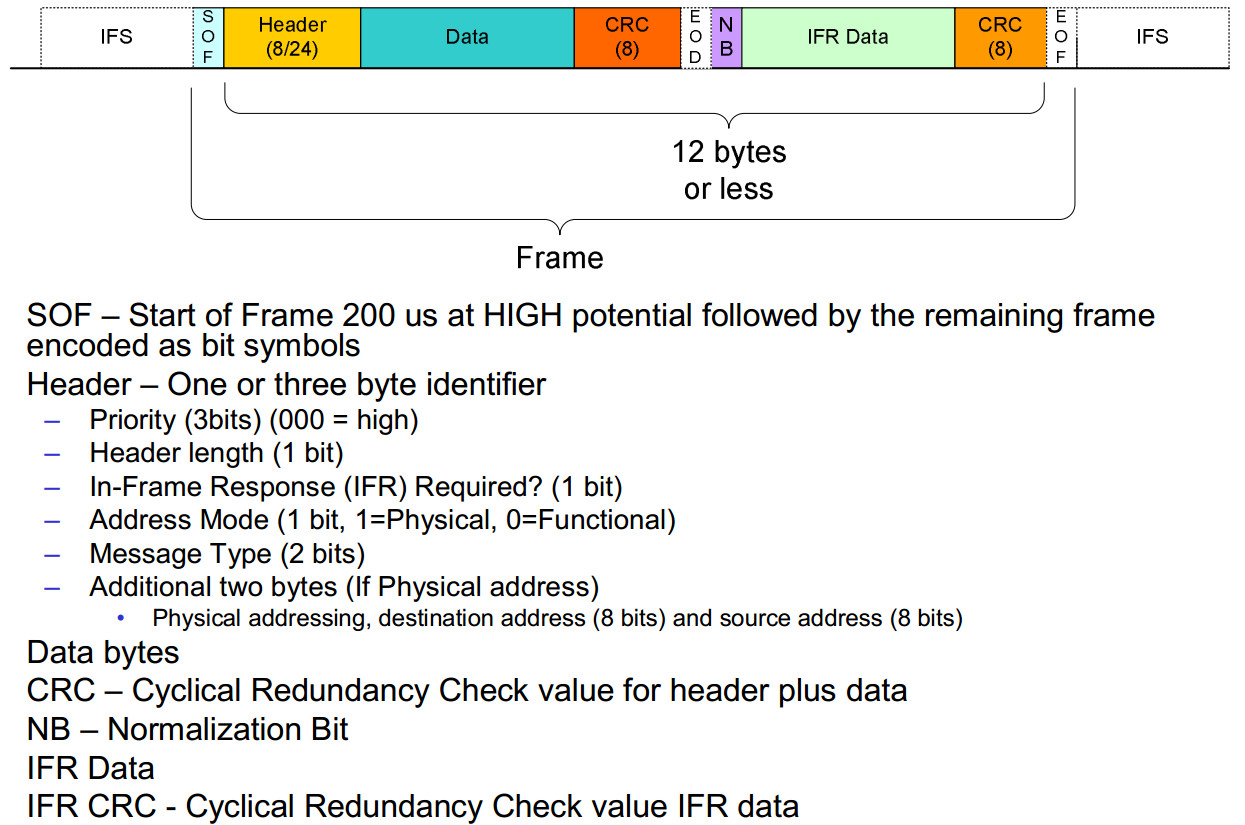

VPW Waveform

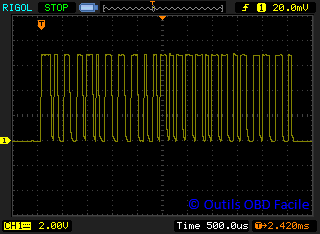
PWM Waveform

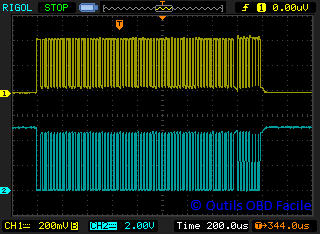

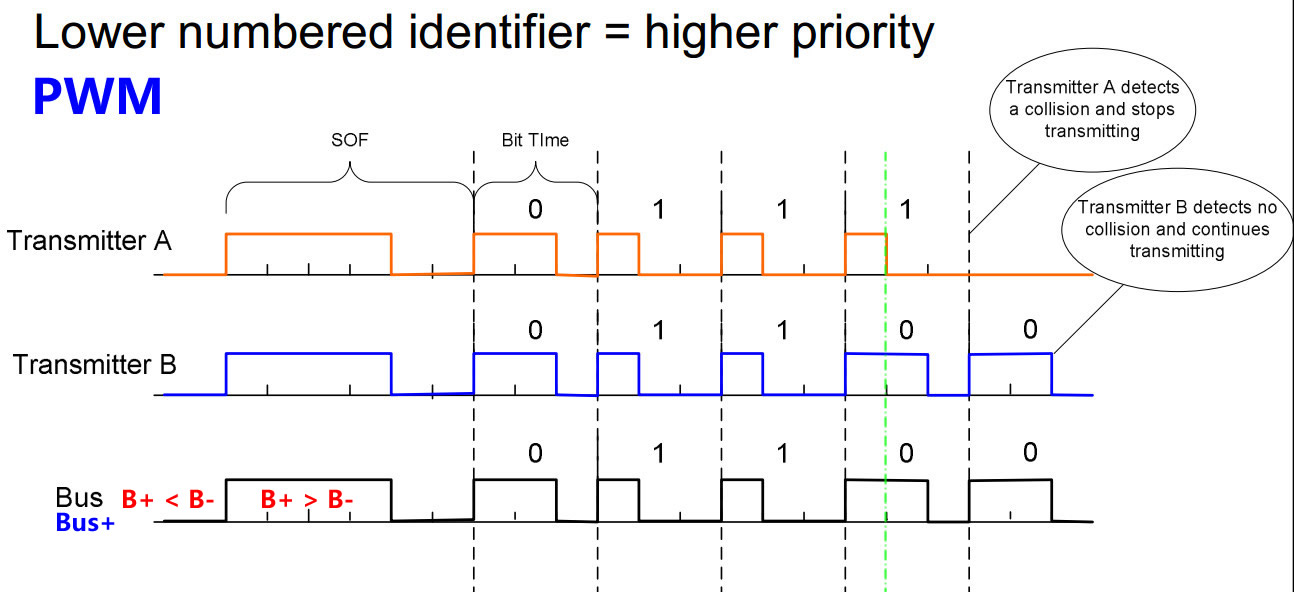
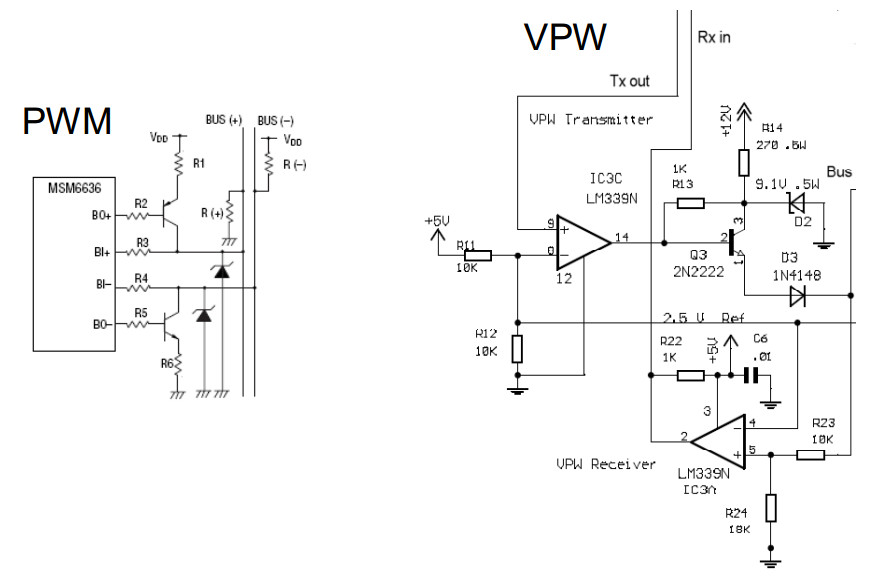
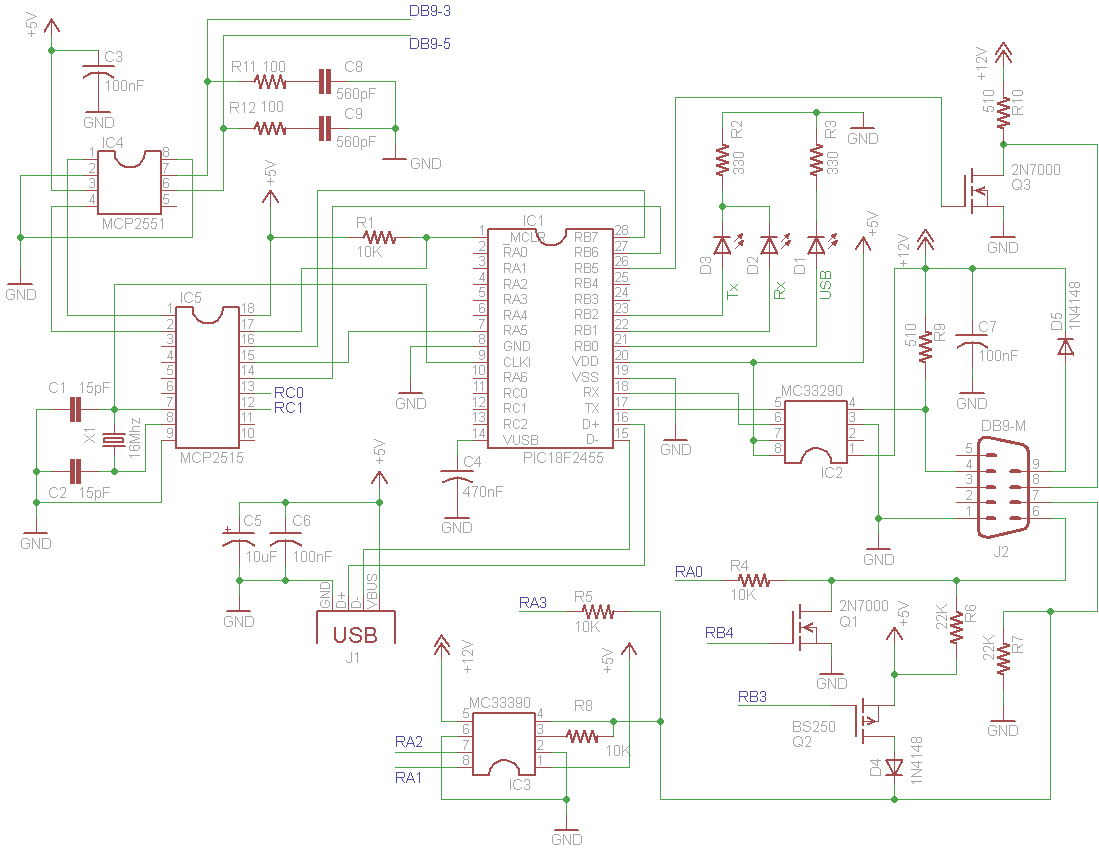
http://www.obddiag.net/allpro.html
http://www.obddiag.net/images/allprousb.pdf
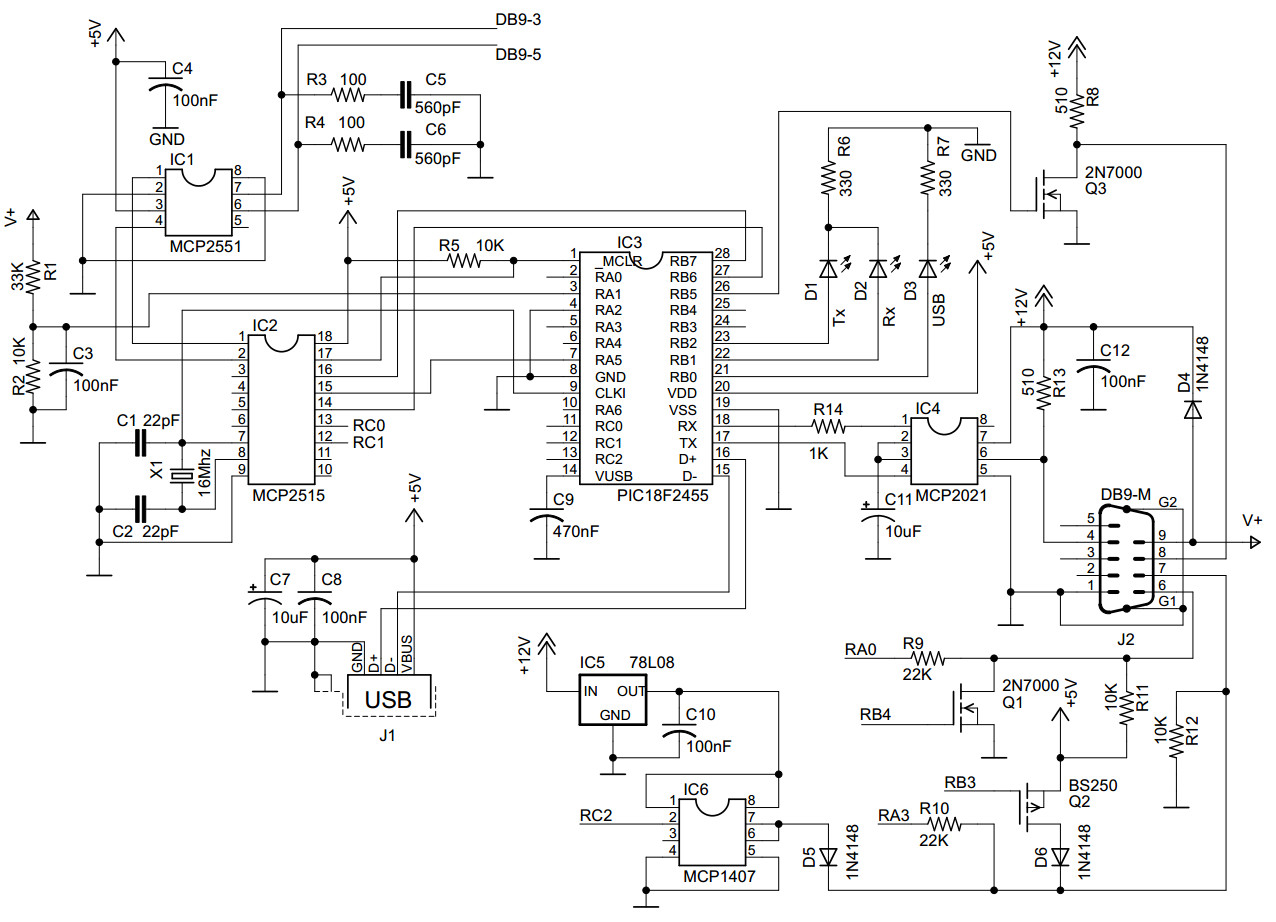





【推荐】国内首个AI IDE,深度理解中文开发场景,立即下载体验Trae
【推荐】编程新体验,更懂你的AI,立即体验豆包MarsCode编程助手
【推荐】抖音旗下AI助手豆包,你的智能百科全书,全免费不限次数
【推荐】轻量又高性能的 SSH 工具 IShell:AI 加持,快人一步
· Linux系列:如何用heaptrack跟踪.NET程序的非托管内存泄露
· 开发者必知的日志记录最佳实践
· SQL Server 2025 AI相关能力初探
· Linux系列:如何用 C#调用 C方法造成内存泄露
· AI与.NET技术实操系列(二):开始使用ML.NET
· 被坑几百块钱后,我竟然真的恢复了删除的微信聊天记录!
· 【自荐】一款简洁、开源的在线白板工具 Drawnix
· 没有Manus邀请码?试试免邀请码的MGX或者开源的OpenManus吧
· 园子的第一款AI主题卫衣上架——"HELLO! HOW CAN I ASSIST YOU TODAY
· 无需6万激活码!GitHub神秘组织3小时极速复刻Manus,手把手教你使用OpenManus搭建本